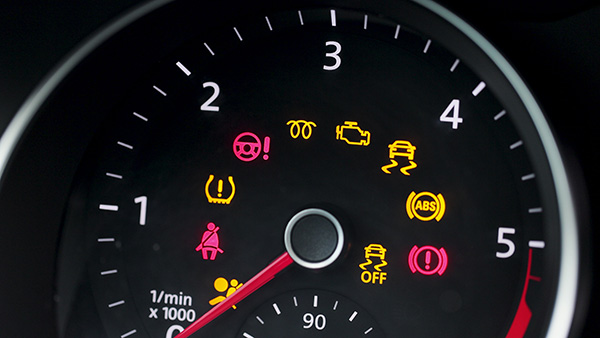
Modern cars are equipped with advanced sensors and warning systems designed to keep you informed and protected. But when one of those little lights on the dashboard turns on, it can be confusing or even alarming. Some drivers ignore them, while others assume the worst. Knowing what these lights mean can help you take action before small problems become major repairs.
Not all dashboard lights indicate emergencies. Some are reminders, others are warnings, and a few are serious alerts that require immediate attention. Whether you drive a newer vehicle with digital displays or an older car with traditional gauges, understanding your dash lights is key to safe and reliable driving.
The Check Engine Light
One of the most common warning lights is the check engine light. When it glows solid, it usually means something needs attention but isn’t urgent. A loose gas cap, failing oxygen sensor, or minor emissions issue might be the cause.
However, if the check engine light flashes, it indicates a more severe issue, like an engine misfire that could damage your catalytic converter. In that case, it’s best to pull over, avoid driving further than necessary, and have the vehicle checked right away.
Oil Pressure Warning: Don’t Ignore This One
The oil pressure light looks like an old-fashioned oil can. When it illuminates, it indicates that your engine may not be receiving sufficient oil pressure. This could be due to low oil levels, a failing oil pump, or internal leaks.
Low oil pressure can lead to severe engine damage if left unaddressed. If you see this light while driving, pull over safely and turn off the engine. Check your oil level if you can. If it’s low, adding oil might help, but the light should never be ignored.
Battery Light: More Than Just the Battery
When the battery symbol appears on your dash, it means there’s a problem with the charging system—not just the battery itself. The alternator could be failing, the battery connections might be corroded, or a belt could be loose or broken.
If this light comes on while driving, your vehicle may only have limited time before it loses electrical power. It’s best to head straight to a repair shop or call for assistance if you notice dimming headlights or trouble starting the engine.
Brake System Light: Multiple Possibilities
A red brake warning light may indicate that the parking brake is engaged, but if it remains on after the brake is released, it could point to a more serious issue. Low brake fluid, worn brake pads, or a malfunction in the braking system can all cause this light to activate.
There’s also a separate ABS light for the anti-lock braking system. If that light comes on, your car may still brake normally, but you could lose ABS functionality during hard stops or slick conditions. It’s still safe to drive in most cases, but you should have it inspected soon.
Coolant Temperature Warning: Heat Trouble Ahead
This light, often shaped like a thermometer, tells you the engine is running too hot. Overheating can result from low coolant, a failing thermostat, or a malfunctioning cooling fan. Driving an overheated engine can cause permanent damage, like a blown head gasket or cracked cylinder head.
If you see this light, stop the vehicle and turn off the engine. Let it cool before opening the hood, and never remove the radiator cap while the engine is hot. If the coolant is low, topping it off may help, but if the problem persists, the car needs professional attention.
Tire Pressure Monitoring System (TPMS): A Warning for Safety and Efficiency
This symbol looks like a horseshoe with an exclamation point in the middle. It means one or more of your tires have low pressure. Driving on underinflated tires reduces fuel efficiency, compromises handling, and increases the risk of a blowout.
Check your tire pressures with a gauge and inflate them to the manufacturer’s recommended levels found on the door jamb sticker. Sometimes, seasonal temperature changes can trigger this light as well.
Other Dashboard Lights to Know
There are dozens of other symbols that could show up on your dashboard, including:
- Traction control light
- Airbag warning
- Door ajar or trunk open indicator
- Low fuel warning
- Service reminder or wrench light
Each light has a purpose, and learning to recognize them helps you react appropriately. Your vehicle’s owner’s manual is the best resource for identifying uncommon dashboard indicators.
Stay Ahead of Dashboard Warnings with Dhillon Motorsports in San Jose, CA
The best way to handle dashboard lights is to never ignore them. Most problems start small and grow over time if left unaddressed. Early attention can save money, reduce risk, and keep your vehicle running smoothly.
If you’ve seen a warning light on your dash and aren’t sure what it means, schedule a diagnostic check at Dhillon Motorsports in San Jose, CA. Our expert technicians will read the codes, explain the issue, and recommend the right repair to get you back on the road with peace of mind.